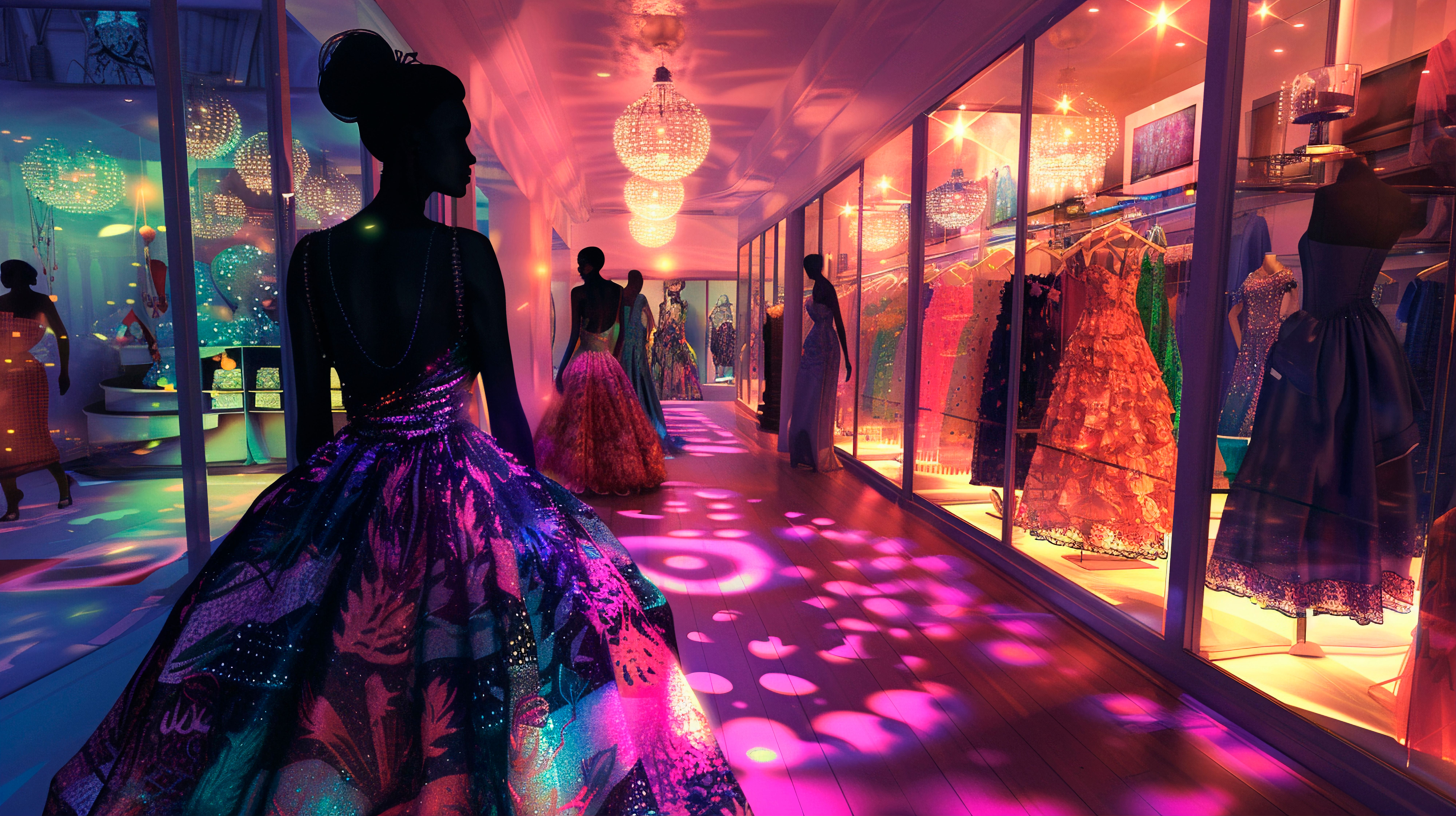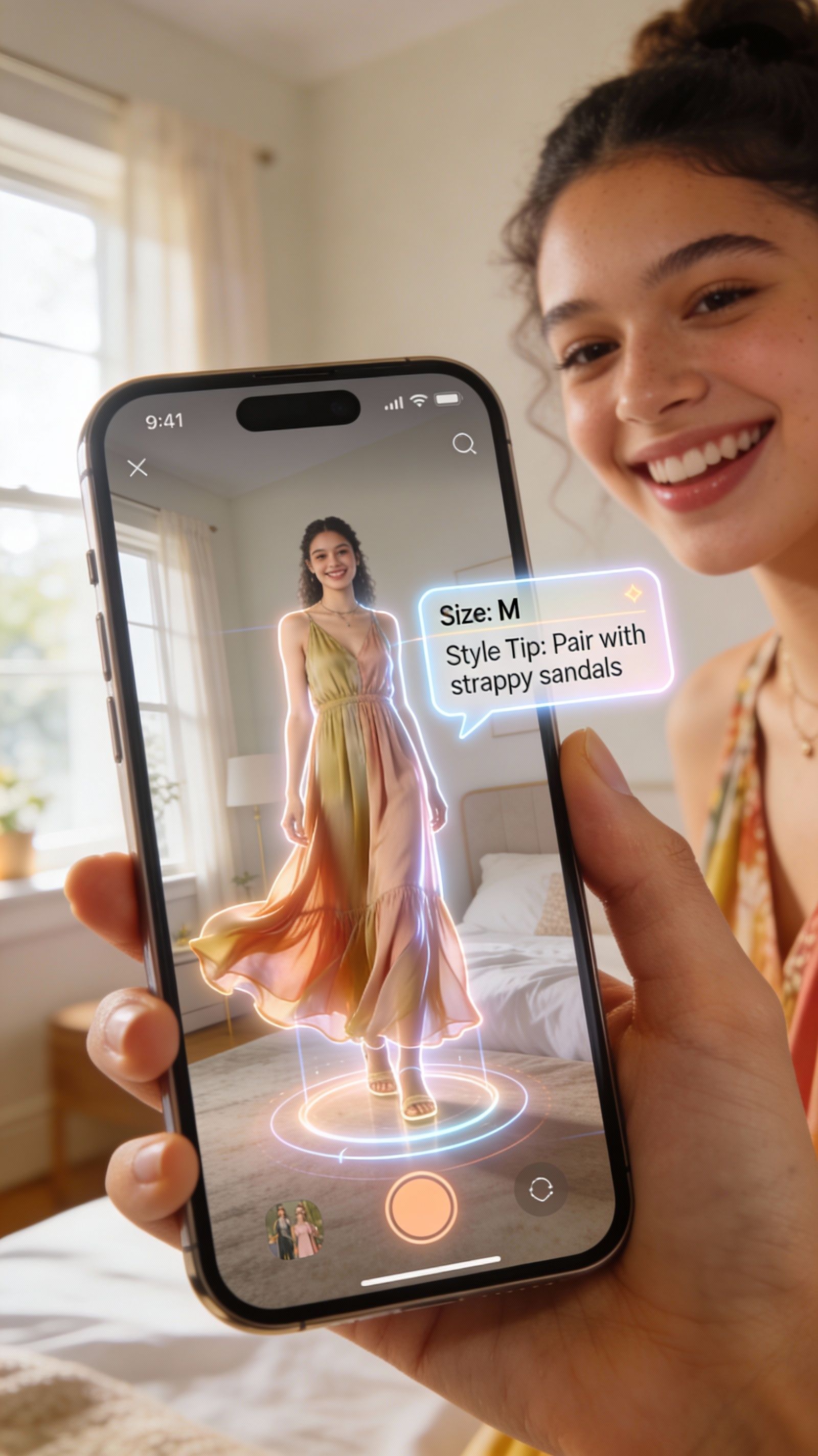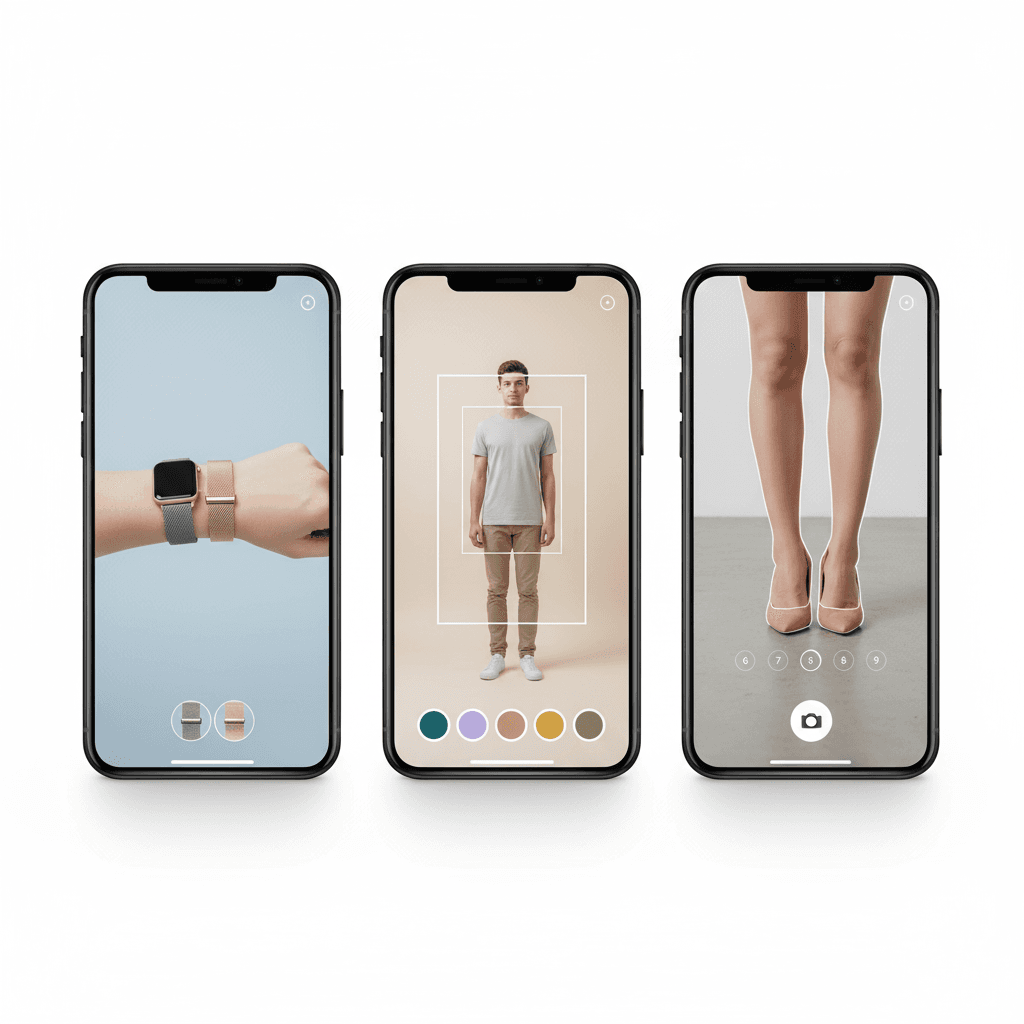How Augmented Reality Retail Shopping Is Changing Fashion?
Beyond the Runway: How AI Powered Shopping Assistant Is Redefining the Future of Fashion


TL;DR:
AI-powered shopping assistants are transforming fashion by predicting trends, personalizing shopping experiences, and enabling virtual try-ons. These tools analyze social media, e-commerce, and street style to forecast what will be popular, while also offering hyper-personalized recommendations based on body type, style preferences, and lifestyle. Beyond convenience, AI helps brands reduce waste, optimize production, and even test digital-only collections in virtual environments. In essence, AI is making fashion smarter, more sustainable, and tailored to real-time consumer desires.
Fashion has always been about creativity, intuition, and cultural expression, but the rules of the game are changing. Trends no longer rely solely on designers, runway shows, or seasonal calendars. Today, AI-powered shopping assistants are stepping in to shape what we wear, how we shop, and even which trends go viral. Imagine an app that not only suggests outfits but understands your style, your body type, and even predicts what will be popular next.
With AI, fashion is no longer just a visual art—it’s a smart, data-driven experience. From virtual try-ons that let you see how clothes fit without stepping into a store, to predictive analytics that forecast the next big trend, technology is blending seamlessly with style.
How?
Let’s dive deep into this blog.
The Evolution of AI Powered Shopping Assistant & The Future of Fashion

AI-Driven Data Synthesis: From Social Scrolls to Style Statements
The sheer volume of digital content created each day is staggering—over 100 million Instagram photos, thousands of TikTok fashion hauls, and countless Pinterest mood boards. AI processes this massive dataset through machine learning algorithms to identify nascent trends. For example, sentiment analysis tools can track how a celebrity's outfit performs across platforms and correlate this with user reactions.
This allows fashion brands to make data-backed decisions instead of relying purely on intuition or seasonal shows. A color palette that gains traction in Seoul might quickly show up in London collections, thanks to real-time data synchronization. The runway is no longer the only trendsetter—the streets and screens have joined the chorus.
Did you know? The global AI shopping assistant market size was valued at approximately USD 4.26 billion in 2025 and is projected to grow to USD 36.38 billion by 2034, with a CAGR of about 26.8%.
Real-Time Trend Adaptation: Fast Fashion Gets Smarter

Natural Language Processing (NLP) enables brands to monitor fashion conversations as they unfold. Hashtag trends, search queries, and geotagged posts help AI-powered shopping assistants identify region-specific micro-trends. If oversized blazers trend in New York but not in Tokyo, brands can localize their collections accordingly.
Zara and Shein, for instance, utilize AI personalized shopping to move from trend identification to in-store availability in a matter of weeks. This agility ensures relevance in an industry known for its fleeting attention spans. It's not just fast fashion anymore—it's smart fashion.
Predictive Analytics: Forecasting Beyond Seasons
Predicting fashion cycles used to involve educated guesses based on cultural shifts and historical trends. Now, neural networks trained on decades of fashion data can identify macro-trends before they go mainstream. Think of the resurgence of Y2K fashion or the growing preference for utility wear—both anticipated by predictive models analyzing retail data, pop culture, and even climate change.
Retailers use this foresight to inform not only their design pipeline but also their supply chain. If recycled polyester is projected to spike in demand, fabric suppliers can adjust production, creating a smoother and more sustainable ecosystem.
Visual Trend Recognition: AI as the New Fashion Curator
Through computer vision, AI- powered shopping assistants identify subtle design cues from runway collections, street fashion, and user-generated content. These algorithms break down garments by cut, color, pattern, and texture. Google Vision AI, for example, can pinpoint a trend before it gains commercial traction by analyzing recurring elements in thousands of fashion-forward images.
The "neo-Victorian" look was predicted months ahead of its mass adoption, thanks to consistent sightings of lace, ruffles, and high collars in influencer content. Designers today use this data as creative fuel rather than replacement, aligning their vision with consumer appetite.
AI Virtual Try-On: Redefining the Shopping Experience

The emergence of AI virtual try-on features has transformed e-commerce. No more guesswork about how a dress will fall or whether jeans will flatter your silhouette. These technologies use body scanning, facial recognition, and 3D rendering to offer hyper-realistic fittings.
Major retailers now integrate AI-powered shopping assistants that guide customers through style selection, size recommendations, and outfit pairing. This not only boosts customer satisfaction but also significantly reduces return rates—a persistent pain point for online fashion.
You can also experience this AI styling on Glance. Using Gen Ai, Glance, lets you mix and match the outfits on your curated avatar so you learn how the particular outfit goes with your style, body type, skin tone, and more.
Hyper-Personalization at Scale: From You to Trend
Personalized fashion experiences aren't just perks—they're becoming the norm. AI-powered shopping assistants like those used by Stitch Fix analyze up to 90 data points per user, including body type, lifestyle, and past purchases. This individual-level data is then aggregated to inform broader design strategies.
When millions show a preference for elasticated waistbands or neutral color palettes, these preferences evolve into industry-wide movements. In essence, personalization is no longer confined to the shopper—it’s reshaping the shelves.
Sustainability Through Smarter Forecasting

Overproduction has long haunted the fashion industry. With an estimated 15% of fabric wasted annually, the ecological toll is undeniable. AI is helping flip this narrative.
Startups like Unspun employ AI personalized shopping to make made-to-measure jeans, minimizing fabric waste by 30%. AI also improves pattern-cutting techniques, ensuring optimal fabric usage. By predicting demand more accurately, brands can produce only what's necessary, reducing landfill contributions and aligning with the 68% of shoppers who prefer eco-conscious brands.
Digital Fashion and the Rise of Virtual Trendsetters

AI is also enabling the rise of digital-only fashion. Tools like RunwayML allow designers to create outfits that exist solely in virtual environments. These collections are showcased through augmented reality (AR), worn by avatars, or posted on social media for trend-testing.
One digital dress, worn by 10,000 avatars in the metaverse, can act as a litmus test before physical production begins. This low-risk strategy provides rich consumer insights and lowers environmental costs, accelerating fashion's digital future.
Conclusion
AI has become more than a backend tool; it’s a creative partner. Approximately 80% of fashion houses now employ AI-assisted designers who use data to refine their artistic direction.
The fusion of AI and fashion is more than a trend—it's a transformation. In the U.S., the AI shopping assistant market was valued at around USD 1 billion in 2024 and is expected to grow at a CAGR of 27%, reaching USD 6.73 billion by 2032
As AI shopping experience continues to evolve, so will the way we perceive style. The question is no longer "What's next in fashion?" but "What does AI already know about what we want next?"
FAQs
1. How does AI predict fashion trends?
AI predicts fashion trends by analyzing data from social media, e-commerce, runway shows, street style, and past sales to identify patterns in colors, fabrics, silhouettes, and styles. Machine learning models track what people are buying, searching, and sharing in real time, enabling brands to forecast demand, manage inventory, and create designs that stay ahead of emerging trends globally.
2. What is the future of fashion with AI?
AI will reshape the future of fashion by enabling hyper-personalized shopping, smarter and more sustainable design cycles, and real-time trend prediction. It will power virtual try-ons, AI-assisted design, demand forecasting, and inclusive digital fashion, helping brands create faster, reduce waste, and deliver collections that adapt instantly to consumer behavior.
3. Can Gen AI predict future fashion based on historical data?
Yes. Generative AI can predict future fashion trends by analyzing historical data, past style cycles, social media signals, and consumer behavior patterns.
It identifies repeating silhouettes, colors, and cultural shifts, then uses these patterns to forecast what’s likely to re-emerge or evolve. Paired with real-time data, Gen AI helps brands anticipate demand, design relevant collections, and react faster to emerging micro-trends.
4. How are fashion trends predicted?
Fashion trends are predicted by analyzing large amounts of data from social media, search patterns, influencer content, runway shows, and retail sales. AI tools track emerging patterns in colors, fabrics, and styles, while market researchers study cultural shifts and consumer behavior. By combining real-time digital signals with historical trend cycles, brands can forecast what styles are likely to rise next with higher accuracy.







